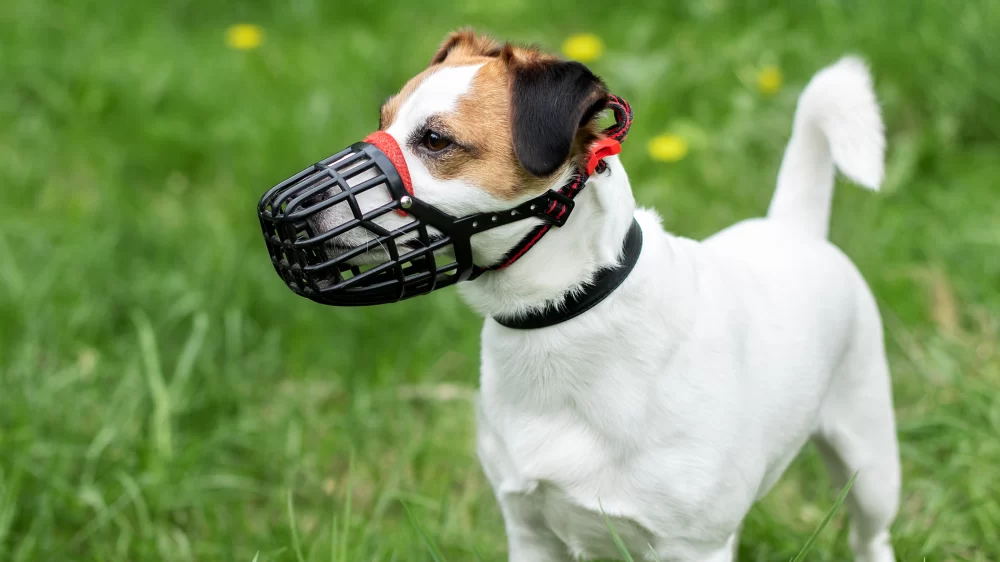Why a Dog Muzzle Can Be an Essential Tool for Training Your Dog
As a dog owner, training your furry friend can sometimes feel like a challenge. We've all faced moments when our dogs become overly excited, anxious, or even aggressive, making it difficult to teach them the behaviors we want them to learn. That's where a dog muzzle can come in handy. While many people associate muzzles with negative images of aggression, in reality, they are an invaluable tool in the training process, especially for dogs with behavioral issues.
1. Understanding the Role of a Dog Muzzle in Training
When I first considered using a muzzle for my dog, Max, I had many reservations. The thought of putting something over his face seemed counterintuitive to my training goals. However, I soon discovered that a muzzle, when used correctly, can be a powerful tool for managing certain behaviors during training sessions. Instead of viewing it as a punishment, I realized that it can help create a safer environment for both the dog and the trainer.
A muzzle is designed to prevent a dog from biting, chewing, or barking excessively. While it is not a permanent solution to behavioral problems, it can help manage specific behaviors, allowing you to work on more effective training methods without the risk of injury or frustration. By using a muzzle in the right situations, you can give your dog the space and time they need to learn and grow.
2. Safety and Stress Reduction for Both You and Your Dog
One of the biggest benefits of using a dog muzzle is safety. If you have a dog that is prone to biting, whether out of fear, anxiety, or aggression, a muzzle ensures that both you and your dog are protected during training sessions. In situations where your dog might feel threatened or overly excited, a muzzle can prevent them from reacting in a harmful way.
Take the example of my neighbor’s dog, Daisy, who would often snap at people when they tried to approach her. Daisy had experienced some trauma in the past, which made her overly defensive around strangers. After a few sessions using a well-fitted muzzle, Daisy became much more relaxed and open to human interaction. The muzzle provided a safety net that allowed her to experience positive reinforcement without the risk of snapping out of fear.
3. Behavioral Control During Challenging Situations
Training a dog with behavioral problems often requires patience and the ability to manage their reactions. Whether it's barking excessively, jumping up on people, or showing signs of aggression, a muzzle can help keep your dog under control during challenging situations. It allows you to correct unwanted behaviors while preventing your dog from escalating into a state of fear or aggression.
For instance, when working on Max’s leash training, he had a tendency to bark at other dogs and people when we were out for walks. By using a muzzle, I was able to reduce the chance of him reacting aggressively, giving me the opportunity to work on his leash etiquette in a calm and controlled manner. As we progressed, I was able to gradually phase out the muzzle as his behavior improved.
4. Aiding in Positive Reinforcement Techniques
A muzzle can also support positive reinforcement techniques by providing a way to manage your dog’s behavior without negative consequences. Instead of punishing a dog for undesirable behavior, a muzzle allows you to focus on rewarding good behavior and guiding your dog through the learning process. This approach helps foster a trusting relationship between you and your dog.
For example, I remember one time when Max was learning to stay calm when people came to the door. At first, he would get overly excited, barking and jumping, making it difficult for me to communicate with him. By using a muzzle, I could ensure that he didn’t hurt anyone while we worked on redirecting his energy. Over time, Max learned that staying calm earned him treats and praise, which reinforced his good behavior without the added stress of a fearful or aggressive response.
5. Choosing the Right Muzzle for Training
Not all muzzles are created equal. When selecting a muzzle for your dog, it’s important to choose one that is both comfortable and secure. There are several types of muzzles available, including basket muzzles and soft muzzles. Basket muzzles are often the best choice for training, as they allow your dog to breathe comfortably, drink water, and even pant. This is important because you don’t want your dog to feel restricted or overheated during training sessions.
Make sure that the muzzle fits your dog properly. A muzzle that is too tight can cause discomfort, while one that is too loose may not be effective in preventing unwanted behaviors. If you’re unsure, consulting with a professional trainer or a veterinarian can help ensure you select the right muzzle for your dog’s needs.
6. Important Tips for Using a Muzzle in Training
When introducing a muzzle to your dog, it’s essential to go at their pace. Start by allowing your dog to get used to the muzzle in a positive and calm setting, such as during playtime or feeding time. Gradually increase the duration of wearing the muzzle while rewarding your dog for staying calm and comfortable. Never force your dog to wear the muzzle if they seem distressed, as this can create negative associations with the training process.
Also, remember that a muzzle should not be used as a punishment. It’s simply a tool to manage specific situations where your dog’s behavior may become unpredictable. Always pair the muzzle with positive reinforcement techniques to help your dog understand what behaviors are desirable and what are not.
7. Conclusion: A Valuable Tool in Your Training Toolbox
In my experience, using a dog muzzle for training has been a game-changer. It’s allowed me to work with Max on his behavior in a safe, controlled manner, reducing the stress for both of us. While a muzzle is not a solution for every behavioral issue, it’s an invaluable tool when used correctly, helping your dog learn to behave in a variety of situations. With the right approach and plenty of patience, a muzzle can be an essential part of your dog’s training journey.










